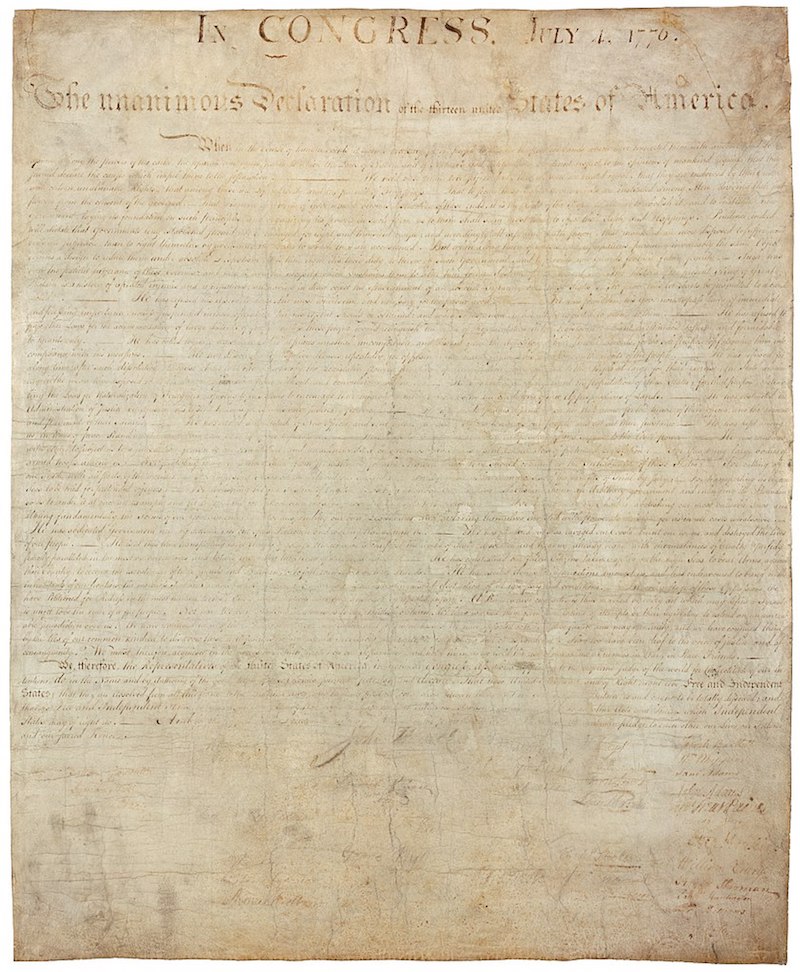Founding-Documents Blog Series: Part One
Between now and July 4th, my blog will be an ongoing series related to the history and signing of the Declaration of Independence. While our country and the media is lately consumed with the US Constitution, understanding our founding better begins with an examination of the documents in order of creation.
. . . . . . . . . . . . . . . . . . . . . . . . . . . . . .
How many copies exist of the Declaration of Independence?
Hundreds. You’ll find a tabloid size copy in historic homes like Berkley Plantation, home of Benjamin Harrison IV, signer of the original document. There’s a massive copy hanging on the wall in the Virginia State capitol building. The American Revolution Museum at Yorktown has a broadside. We see so many versions of the Declaration of Independence, and you can buy a replica for about $4 at historic museums. However, in 1776 there was only ONE piece of parchment—with hand-written calligraphy—drafted to contain all the signatures.
 The Sole Declaration of Independence
The Sole Declaration of Independence
Yes, it’s this document (approx. 24″x30″) at the National Archives that thousands of people (over 275,000 during June and July alone) visit when they come to the museum each year. It’s the one encased in bullet-proof glass stolen by Nicholas Cage. I wouldn’t call it a copy. A copy implies that it’s a duplicate. That ONE original document (shown above), is the only one that contains all 56 original signatures of the Congress. (Until November of 1776 there were only 55 signatures, but that’s a whole other story.)
Why was there one Declaration of Independence?
It was a contract. It was a unanimous agreement between the men and between the thirteen colonies—an agreement for the colonies to separate from the Crown AND come together as these united states (yes, lower case) of America.
The copies you see—often called Broadsides and with typeset text and names—were made before the original contract was signed and afterward. Broadsides were notices, distributed and posted, detailing what Congress had agreed to do.
What they had agreed to was not war. I find it easiest to remember the purpose of the Declaration by describing it one of two ways… It was both a divorce decree and a marriage agreement. It was one of the biggest “Dear John” letters in history.
“The #DeclarationofIndependence was not a declaration of war. It was both a divorce decree and a marriage agreement. Basically, it was the biggest ‘Dear John’ letter in history.” Huzzah to #carryingindependence and sharing #ChasingHistories with author @karenachase – Tweet This…
. . . . . . . . . . . . . . . . . . . . . . . . . . . . . .
For more history nerd posts like these, subscribe to the blog. Guest posts are welcomed and encouraged. Contact me for details.
For behind-the-scenes author-related news, giveaways, and to find out where I might be speaking near you, subscribe to my e-publication, CHASING HISTORIES.
